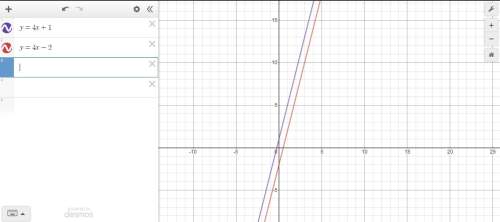
Mathematics, 07.10.2020 14:01 rcmolyneaux
When a scientist conducted a genetics experiments with peas, one sample of offspring consisted of 911
peas, with 713
of them having red flowers. If we assume, as the scientist did, that under these circumstances, there is a 3 divided by 4
probability that a pea will have a red flower, we would expect that 683.25
(or about 683
)
of the peas would have red flowers, so the result of 713
peas with red flowers is more than expected.
a. If the scientist's assumed probability is correct, find the probability of getting 713
or more peas with red flowers.
b. Is 713
peas with red flowers significantly high?
c. What do these results suggest about the scientist's assumption that 3 divided by 4
of peas will have red flowers?
a. If the scientist's assumed probability is correct, the probability of getting 713
or more peas with red flowers is 0.0126
.
(Round to four decimal places as needed.)
b. Is 713
peas with red flowers significantly high?
Yes,
No,
Yes,
because the probability of this event is
less
less
greater
than the probability cutoff that corresponds to a significant event, which is
0.05.
0.05.
0.95.
0.5.
c. What do these results suggest about the scientist's assumption that 3 divided by 4
of peas will have red flowers?
A.
Since the result of 713
peas with red flowers is
significantly high, it is not
strong evidence against the scientist's assumption that 3 divided by 4
of peas will have red flowers.
B.
The results do not indicate anything about the scientist's assumption.
C.
Since the result of 713
peas with red flowers is not
significantly high, it is
strong evidence against the scientist's assumption that 3 divided by 4
of peas will have red flowers.
D.
Since the result of 713
peas with red flowers is
significantly high, it is
strong evidence against the scientist's assumption that 3 divided by 4
of peas will have red flowers.
E.
Since the result of 713
peas with red flowers is
significantly high, it is
strong evidence supporting the scientist's assumption that 3 divided by 4
of peas will have red flowers.
F.
Since the result of 713
peas with red flowers is not
significantly high, it is not
strong evidence against the scientist's assumption that 3 divided by 4
of peas will have red flowers.

Answers: 3
Another question on Mathematics

Mathematics, 21.06.2019 13:00
Me write an equation for the interior angles of this triangle that uses the triangle sum theorem
Answers: 2

Mathematics, 21.06.2019 14:20
At his new job, jeremiah can choose an hourly rate of $9 plus a $50 weekly bonus for opening the store, or an hourly rate of $10 per hour with no opening bonus. the equations model his salary options. y = 9x + 50 y = 10x
Answers: 2

Mathematics, 21.06.2019 20:00
Find the least common multiple of the expressions: 1. 3x^2, 6x - 18 2. 5x, 5x(x +2) 3. x^2 - 9, x + 3 4. x^2 - 3x - 10, x + 2 explain if possible
Answers: 1

Mathematics, 21.06.2019 22:00
Which two undefined geometric terms always describe figures with no beginning or end?
Answers: 3
You know the right answer?
When a scientist conducted a genetics experiments with peas, one sample of offspring consisted of 91...
Questions



Health, 21.01.2020 22:31




Mathematics, 21.01.2020 22:31

Mathematics, 21.01.2020 22:31


Mathematics, 21.01.2020 22:31

Spanish, 21.01.2020 22:31

Biology, 21.01.2020 22:31




Computers and Technology, 21.01.2020 22:31



Mathematics, 21.01.2020 22:31

Mathematics, 21.01.2020 22:31




